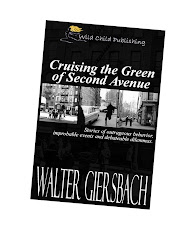Imagine
running for your life, hoping the man whose wagon you’re in was an abolitionist
and not a slave-catcher, not knowing where you were heading except it was
north. Away from family, friends, the
plantation. And finally you’re out — free!
— in Timbuctoo.
The place half
an hour south of Trenton, in Westampton Twsp., was sanctuary to runaway slaves. Beginning in the 1820s, freed and escaped
slaves formed a town. They survived
there through the end of slavery in New Jersey, the Fugitive Slave Act and the
Jim Crow era. The last families didn't
leave until the 1950s. At its peak,
Timbuctoo was home to more than 150 people.
But it wasn’t a total sanctuary. In 1860 the “Battle of Pine Swamp” took place
in Timbuctoo, as reported in the New Jersey Mirror, a local
newspaper. It involved armed residents
of Timbuctoo preventing the capture of Perry Simmons, a fugitive slave living
in Timbuctoo, by a southern slave catcher.
Today, Patricia Markert
of Temple University and about a dozen other archaeologists are digging and
cleaning the site to confirm that slaves, and a few immigrants and native
Americans settled this area. No one
knows if the name, “Timbuctoo,” was chosen by the blacks or by the Quakers who
offered them assistance.
So far, Markert and the
diggers have found bricks that were cast off from a nearby Quaker brickyard. And bottles, tools and toys dug up from the
ground. Near the dig is a van that has
become a temporary museum. Ziploc bags
sit where the van’s seats would be, full of categorized artifacts, waiting to
go to Temple University for cleaning.
The National Public Radio profile reports a lot of those artifacts are
bottles for household products, like Listerine and Vaseline. Most of the brand names on the bottles are
national, because white-owned local stores rarely sold to the people of
Timbuctoo. Residents ordered supplies by
mail so vendors wouldn't know they were black.
The Westampton
website notes the village was located on the North Branch of Rancocas Creek in
Burlington County, making Timbuctoo easily accessible from the Delaware
River. And made it a strategic location
for the Underground Railroad. Settlers
there had access to tidal waters and wetlands for fishing and hunting as well
as fields for farming. Two major
brickyards nearby offered employment.
National Public Radio profiled the recovery
effort, noting one local volunteer is 75-year-old Mary Weston, who lives
just down the street. She says, “My
great-great-great-grandfather actually purchased the land for, what was it, $38
dollars and 50 cents? He was one of the
original inhabitants of Timbuctoo.” In
her home, she shows off her favorite
piece of Timbuctoo history: her family Bible.
“It was passed down to me from the 1800s,” says Weston. “I keep it together with a belt,
because…. I am determined that my
children and my grandchildren will know a lot more about not only their family,
but about their heritage, who they are, where they came from.”
Westampton's mayor, Sidney Camp, was instrumental
in getting the dig started and frequently visited the clearing before he knew
it was Timbuctoo. “When I was having a
bad day, I would come out here and just stand in the middle of this field,
because it’s so peaceful and so serene,” he says. “To come out now and see what I've been
standing over for so many years — it's amazing. It's indescribable.”
Westampton
celebrates Timbuctoo Day each May. During this town-wide celebration, guests are
invited to explore the original village site; a Civil War reenactment by the
Sixth Regiment U.S. Colored Troops; walking tours of the 19th century village;
visits to the church’s burial grounds with graves of Civil War soldiers; and an
archeological exhibit and music by local church groups.




